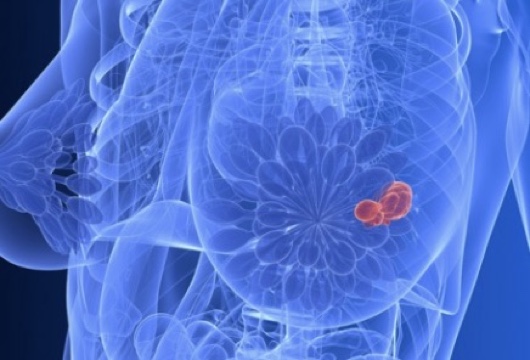90% of the time CyberKnife Can Prevent Mastectomies, Saving the Breast Should Breast Cancer Return following a Lumpectomy & Whole Breast Radiation Therapy:
Approximately 10% of breast cancer patients treated with lumpectomy (breast-conserving surgery [BCS]) and whole-breast radiation (WBI) will have a subsequent in-breast local recurrence of cancer (IBTR) when followed long term.
The surgical standard of care has been to perform mastectomy if breast cancer recurs following such breast-preserving treatment. However, a new multi-center study led by Douglas W. Arthur, MD, Chair of the Department of Radiation at the Virginia Commonwealth University/Massey Cancer Center provides the first evidence that partial breast re-irradiation is a reasonable alternative to mastectomy following tumor recurrence in the same breast.
Unlike WBI, which exposes the entire breast to high-powered X-ray beams, partial-breast irradiation, such as CyberKnife targets a high dose of radiation directly on the area where the breast tumor is located and thus avoids exposing the surrounding tissue to radiation.
“Effectiveness of Breast Conserving Surgery and 3-Dimensional Conformal Partial Breast Reirradiation for Recurrence of Breast Cancer in the Ipsilateral Breast The NRG-RTOG 1014 Phase 2 Clinical Trial” published in JAMA Oncology demonstrates that for patients experiencing an IBTR after a lumpectomy, breast conservation is achievable in 90% of patients using adjuvant partial breast re-irradiation, which results in an acceptable risk reduction of IBTR.
The study investigators, from 15 institutions, analyzed late adverse events (those occurring one or more years after treatment), mastectomy incidence, distant metastasis-free survival, overall survival, and circulating tumor cell incidence.
Median follow-up was 5.5 years.
Patients who were eligible for the study experienced an IBTR that was 3 centimeters or less occurring one year or less after lumpectomy with WBI who had undergone reexcision of the tumor with negative margins. Of 58 patients (median age 67) whose tumors were evaluable for analysis, 23 IBTRs were non-invasive, 35 were invasive; 91% were ? 2 cm in size and all were clinically node negative. Estrogen receptor was positive in 76%, progesterone receptor 57% and Her2Neu was over-expressed in 17%. IBTRs occurred in 4 patients, for a 5-year cumulative incidence of 5% (95% CI: 1 %, 13%). Seven patients had ipsilateral mastectomies for a 5-year cumulative incidence of 10% (95% CI: 4%, 20%).
Distant metastasis-free survival and overall survival were 95% (95% CI: 85%, 98%). Four patients (7%) had grade 3- and no patients showed a grade 4 late treatment adverse event.
“This is exciting data for women experiencing an IBTR after an initial lumpectomy and WBI who want to preserve their breast. Our study suggests that breast-conserving treatment may be a viable alternative to mastectomy,” stated Douglas Arthur, MD, the Principle Investigator and Lead Author of the NRG-RTOG 1014 manuscript.
For more information talk to our cancer experts at CyberKnife Miami 305-279-2900 & go to our website now to learn more about CyberKnife treatment for breast cancer
https://www.cyberknifemiami.com/breast-cancer/

